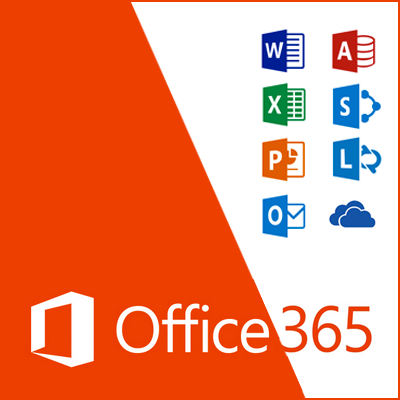
NOTE: Before you start, you need to know removing Office manually is a long, complex process and might require that you reinstall the operating system if certain steps are done incorrectly.
You’ll need to determine your Office installation type so you can choose the correct way to uninstall it:
- Click-to-Run is a new way to install and update Office over the Internet and it works similar to streaming video. By default, Office 365, including Office 2016 products are installed by using Click-to-Run.
- MSI, (also known as the Microsoft Windows Installer), is the traditional way of installing Office via a local installation resource.
To determine your installation type
- Start an Office application, like Word.
- Click File > Account.
- If Office 2016 was installed using Click-to-Run, an Update Options appears. For an MSI installation, theUpdate Options are installed through Windows Update only.
Manually remove a Click-to-Run installation of Office
Before you begin, make sure that you log on to Windows with an administrator account. If you’re not sure if you have an administrator account, see how to determine your user account type in Windows.
Step 1: Remove the Windows Installer packages
- Find the Office 16 installation folder, typically located in C:\Program Files\.
- Right-click the Microsoft Office 16 folder and select Delete.
Step 2: Remove the Office scheduled tasks
- Open a Command Prompt window as an administrator.
- At the command prompt, type the following commands and press Enter after each one:
schtasks.exe /delete /tn “\Microsoft\Office\Office Automatic Updates”
schtasks.exe /delete /tn “\Microsoft\Office\Office Subscription Maintenance”
schtasks.exe /delete /tn “\Microsoft\Office\Office ClickToRun Service Monitor”
schtasks.exe /delete /tn “\Microsoft\Office\OfficeTelemetryAgentLogOn2016”
schtasks.exe /delete /tn “\Microsoft\Office\OfficeTelemetryAgentFallBack2016”
Step 3: Use Task Manager to end the Click-to-Run tasks
- Open Task Manager.
- Windows 10: Right-click Start, and click Task Manager. (The keyboard shortcut Windows logo key + X also works to open the access menu.)
- Windows 8 or 8.1: Point to the upper-right corner of the screen, move the mouse pointer down, and then click Search. Type Task Manager in the search box, and then click Task Manager in the results.
- Windows 7: Right-click an empty area of the taskbar, and then click Start Task Manager.
- Click the Process tab.
- If the following processes are running, right-click each one, and then click End task in Windows 10, End Taskin Windows 8 or 8.1, or End Process in Windows 7 after you select each process.
- OfficeClickToRun.exe
- OfficeC2RClient.exe
- AppVShNotify.exe
- setup*.exe
Step 4: Delete the Office service
- Open a Command Prompt window as an administrator, type the following command, and then press Enter:
sc delete ClickToRunSvc
Step 5: Delete the Office files
- Press Windows logo key + R to open the Run dialog box.
- In the Open box, type %ProgramFiles%, and then click OK.
- Delete the “Microsoft Office 16” folder.
- Delete the “Microsoft Office” folder.
- Open the Run dialog box, type %ProgramFiles(x86)%, and then click OK.
- Delete the “Microsoft Office” folder.
- Open the Run dialog box, type %CommonProgramFiles%\Microsoft Shared and then click OK.
- Delete the “ClickToRun” folder.
- Open the Run dialog box, type %ProgramData%\Microsoft, and then click OK.
- Delete the ClickToRun folder. If the folder does not exist, go to the next step.
- Open the Run dialog box, type %ProgramData%\Microsoft\Office, and then click OK.
- Delete the ClickToRunPackagerLocker file.
NOTE: If you can’t delete a folder or a file that’s open or that’s being used by another program, restart the computer, and then try again. If you still can’t remove the folder, go to the next step.
IMPORTANT: Follow the steps in this section carefully. Serious problems may occur if you modify the registry incorrectly. Before you start, back up the registry for restoration in case problems occur.
Step 6: Delete the Office registry subkeys
- Open Registry Editor.
- Windows 10: Right-click Start, click Run, type regedit, and then click OK.
- Windows 8 or 8.1: Right-click Start, click Run, type regedit, and then click OK.
- Windows 7: Click Start, type Run in the Start Search box, and then click Run in the results.
- Delete the following registry subkeys:
- HKEY_LOCAL_MACHINE\SOFTWARE\Microsoft\Office\ClickToRun
- HKEY_LOCAL_MACHINE\SOFTWARE\Microsoft\AppVISV
- HKEY_LOCAL_MACHINE\SOFTWARE\Microsoft\Windows\CurrentVersion\Uninstall\Microsoft Office <Edition> – en-us
- HKEY_CURRENT_USER\Software\Microsoft\Office
- Then Delete the Office key.
NOTE: In the subkey in the third bullet item, “Microsoft Office <Edition>- en-us” represents the actual program name. This name depends on the Office 2016 edition and language version that you installed.
Step 7: Delete the Start menu shortcuts
- Open a Command Prompt window as an administrator.
- Type %ALLUSERSPROFILE%\Microsoft\Windows\Start Menu\Programs, and then press Enter.
- Delete the “Microsoft Office 2016 Tools” folder.
- Delete each of the “<application> 2016” shortcuts for each of the Office 2016 applications. For example, “Word 2016”, “Excel 2016”, “PowerPoint 2016”.
Step 8: Uninstall the Office 16 Click-To-Run Licensing Component, Extensibility Component and Localization Component
- Open a Command Prompt window as an administrator.
- At the command prompt, type the command that is appropriate for your operating system, and then press Enter:
- If you’re running an x86 version of Office 2016 on an x64 operating system, run the following commands:
MsiExec.exe /X{90160000-008F-0000-1000-0000000FF1CE}
MsiExec.exe /X{90160000-008C-0000-0000-0000000FF1CE}
MsiExec.exe /X{90160000-008C-0409-0000-0000000FF1CE} - If you’re running an x86 version of Office 2016 on an x86 operating system, run the following command:
MsiExec.exe /X{90160000-007E-0000-0000-0000000FF1CE}
MsiExec.exe /X{90160000-008C-0000-0000-0000000FF1CE}
MsiExec.exe /X{90160000-008C-0409-0000-0000000FF1CE} - If you’re running an x64 version of Office 2016 on an x64 operating system, run the following command:
MsiExec.exe /X{90160000-007E-0000-1000-0000000FF1CE}
MsiExec.exe /X{90160000-008C-0000-1000-0000000FF1CE}
MsiExec.exe /X{90160000-008C-0409-1000-0000000FF1CE}
